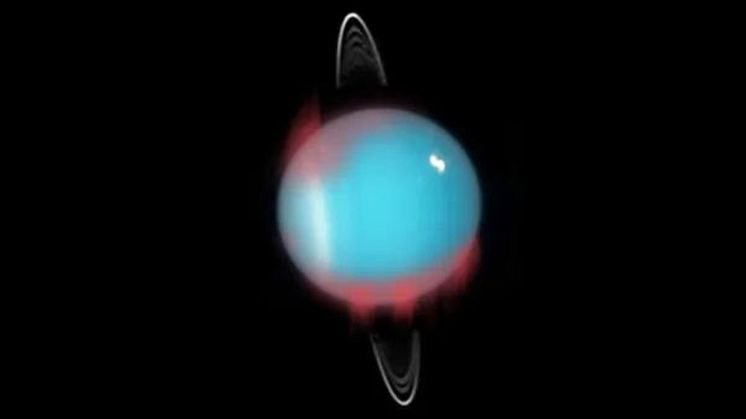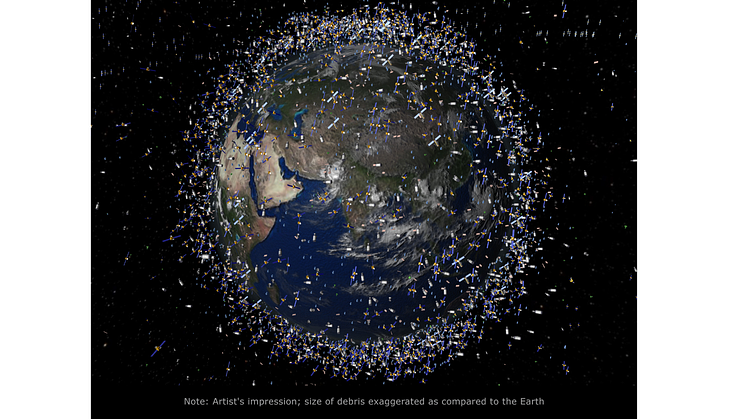Press release -
EXPERT COMMENT: The rising flood of space junk is a risk to us on Earth – and governments are on the hook
In this article originally written for The Conversation*, Dr Thomas Cheney, Vice Chancellor's Research Fellow and Assistant Professor at Northumbria Law School in Northumbria University, discusses the implications of Space Junk.
A piece of space junk recently crashed through the roof and floor of a man’s home in Florida. Nasa later confirmed that the object had come from unwanted hardware released from the international space station.
The 700g, 10cm-long piece of hardware was expected to burn up, Nasa said. Even a relatively small piece of junk can cause considerable damage when falling from space.
This raises several important questions. Who is liable for damages caused by human-made objects that fall from the sky? Can anything be done to prevent this happening? Luckily, international treaties provide some answers to the first question, while recent developments help with the second.
The outer space treaty of 1967 says that the country that authorised the launch (known as the “launching state”) is responsible for damage caused to people or things on Earth. The UN’s liability convention, which came into force in 1972, also makes this liability absolute for damage on Earth or to aircraft in flight.
The concept of absolute liability means that responsibility applies regardless of whose fault it was. Countries are also liable for spacecraft and rocket sections launched by private companies. This is because article 6 of the outer space treaty makes nations responsible for the activities of their citizens in outer space.
So if a piece of space junk launched by one country lands in another, the launching state is responsible for any financial compensation that may result from the costs of damage or clean up. It is important to note that these principles relate to international law. A US object damaging US property is a matter for US law.
All objects in Earth orbit are falling towards Earth. Active satellites engage in “station keeping” to remain in their intended orbit. Inactive satellites – those that no longer work or are disabled in some way – will not be able to perform this task.
Their orbits will steadily drop until they re-enter the Earth’s atmosphere. Of around 11,000 satellites in orbit today, about 3,300 are estimated to be inactive.
There are two main options for best practice when the lifetime of an active satellite comes to an end. One is to either move the satellite into a higher orbit –- known as a graveyard orbit –- in order to delay the date of re-entry (by hundreds, or even thousands of years).
Another is to re-orient the satellite to ensure that it either re-enters in a manner that ensures it burns up in the atmosphere or that it can cause only minimal damage on the ground.
However, due to malfunctions or damage, some space objects still undergo an unplanned re-entry through the Earth’s atmosphere and can thus can land anywhere. Earth is big, however, so the risk of a given space object causing harm to people or property is low, particularly as a space object also needs to survive the searing heat of re-entry which causes many pieces of space junk to burn up.
However, space junk can sometimes reach the ground. Some, such as debris from Skylab, the first US space station, came down in western Australia in 1979 but caused no damage. Other space debris, like Cosmos 954, a Soviet nuclear-powered satellite, spread dangerous radioactive debris across northern Canada when it re-entered in January 1978.
While that clean up cost the Canadian government CA$14 million (about £5.3 million at exchange rates from four decades ago), the Soviet Union reimbursed the Canadian government for CA$3 million. This remains the most significant test of the space treaties and shows the limitations on the protections provided by international law because the compensation was a fraction of the clean-up cost.
The object that recently damaged the home in Florida was American, so that incident will not test the space treaties, as the incident occurred on US soil and will therefore be a matter for US law.
However, it is illustrative of the legal hazards of the proliferation of space objects without adequate end of life planning. The more objects launched into outer space, the more of them will return to Earth. Indeed, they will all eventually enter the atmosphere and not all of them will burn up in the process.
Mitigating space junk
Two sets of UN guidelines present an encouraging picture for what happens to space debris. Recent work to incorporate more long-term planning into these non-binding agreements encourages the development of end-of-life plans for space objects such as satellites.
The guidelines are primarily aimed at dealing with the growing problem of space debris rather than preventing objects from causing damage on Earth. However, planning for the end of a space object’s life will also reduce the risk of an impact on the ground.
A piece of space junk should re-enter on a trajectory that guarantees that it burns up or crashes somewhere it is unlikely to do damage. While the guidelines are non-binding, the liability provisions of the space treaties are not, thus motivating compliance by launching states.
The risk of a piece of space junk crashing through the roof of your house remains very low. As more spacecraft are launched though, the risk from falling space junk will edge up marginally. However, space law is on your side, and efforts to tackle the problem will reduce the risk to people and property.
*This article was originally published by The Conversation. Please see here for republishing guidelines.
Topics
Categories
UNIVERSITY OF THE YEAR 2022 (Times Higher Education Awards)
Northumbria is a research-intensive university that unlocks potential for all, changing lives regionally, nationally and internationally.
Two thirds of Northumbria's undergraduate students come from the North East region and go into employment in the region when they graduate, demonstrating Northumbria's significant contribution to social mobility and levelling up in the North East of England.
Find out more about us at www.northumbria.ac.uk
--- Please contact media.communications@northumbria.ac.uk with any media enquiries or interview requests ---










